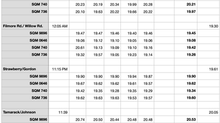Solar Eclipse Starfield Redux
- Chuck Bueter
- Feb 21, 2018
- 1 min read
If you want a glimpse of what the background starfield was during the 2017 total solar eclipse, look at the nearly full moon six months later. Last August 21 the moon glided in front of the sun and the bright star Regulus appeared just to the left of the pair. The other stars were washed out in the daytime glare. (For clarity, the bright daylight sky is eliminated in the illustration.)

About six months later, the full moon has taken up the sun's position along the ecliptic. The full moon is about 180 degrees from the sun, so now you can see the moon again next to Regulus but this time without the daytime sky.
There isn't a full moon exactly 6 months after the eclipse, and there is no full moon on the calendar in February 2018, but if you look at the nearly full moon around 10:00 p.m. on February 28, you will see it nearly in the same place as where totality occurred. Those are the background stars you couldn't see during the solar eclipse.

The intertwined sun-earth-moon relationship is obvious with the seasons. For example, notice how the summer sun is high at noon, but the summer moon is low at midnight. Six months later the winter sun is low at noon but the winter moon is high at midnight. Against the background stars, their positions are swapped.








































